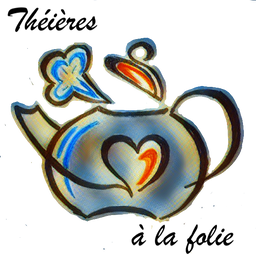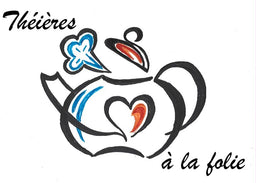Summary :
Yaobian porcelains: They present a simple and natural shape combined with sophisticated colors. Their dominant purple glaze leans towards cyan and moon white in a pattern that comes to life and highlights the support, here the teapot. It is by glazing the cooked body of the teapot several times, then cooking it at low temperature, that we obtain such patterns. The coloring elements copper, cobalt, titanium, manganese and iron combine to produce a variety of shades, blending with the red glaze of the porcelain to create fascinating hues.
Celadon / Yingqing porcelain: The production of monochrome ceramics developed for several centuries in Northern China, particularly for pieces with a green or “celadon” glaze. These pieces were highly developed under the names of Ru, Guan, Ge and Jingdezhen. The delicately lobed and rounded bodies of these porcelains reflect the mastery of the artisans of this period.
Underglaze blue and white porcelain: The pattern is drawn using a cobalt pigment on the stoneware paste, then covered with a transparent glaze, hence the creation of the blue-white style, also called "blue underglaze". The piece is then fired at high temperature. Blue-white porcelain was introduced during the Yuan Dynasty and has endured ever since, thanks to its vibrant colors, simple yet elegant patterns, and smooth glaze that never fades.
Wucai Porcelain (also known as Gucai): Wucai is an overprint decoration technique. After firing the piece at a low temperature, red, green, yellow, blue and purple glazes are applied to the white porcelain. Wucai has been popular since the early Qing Dynasty.The themes of Gucai painting are very limited and mainly include peach, lychee, and pomegranate, which are symbols of good luck. Colorful paints on white porcelain will be vibrant after being kiln fired.
Doucai Porcelain: Doucai porcelains feature an unusual combination of delightful patterns, color coordination, and delicately executed color filling. It reached its excellence during the reigns of Yonzhen and Kangxi during the Qing Dynasty. The blue-white color is first applied under the glaze. Red, green and yellow are then applied over the glaze and the piece is fired at a low temperature.
Famille Rose (Fencai, Yangcai): Famille Rose was developed during the Kangxi reign of the Qing dynasty, and is based on the Wucai and Docai styles. Famille Rose porcelains feature complicated, detailed and ornate designs, the color is regular, the tone is balanced.


